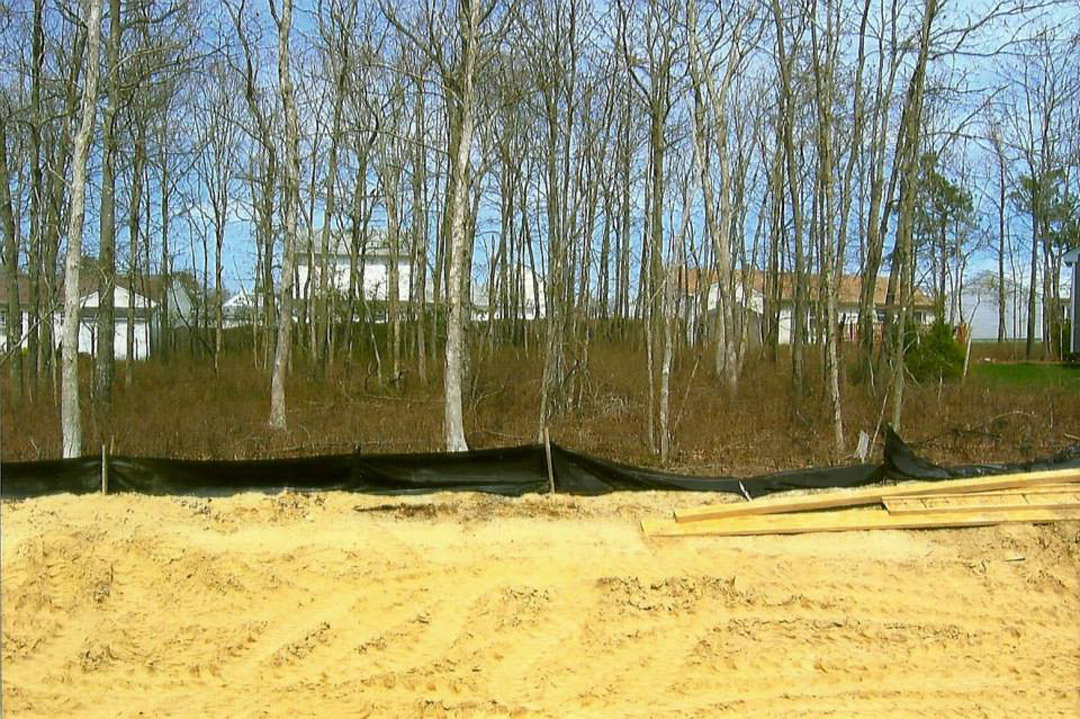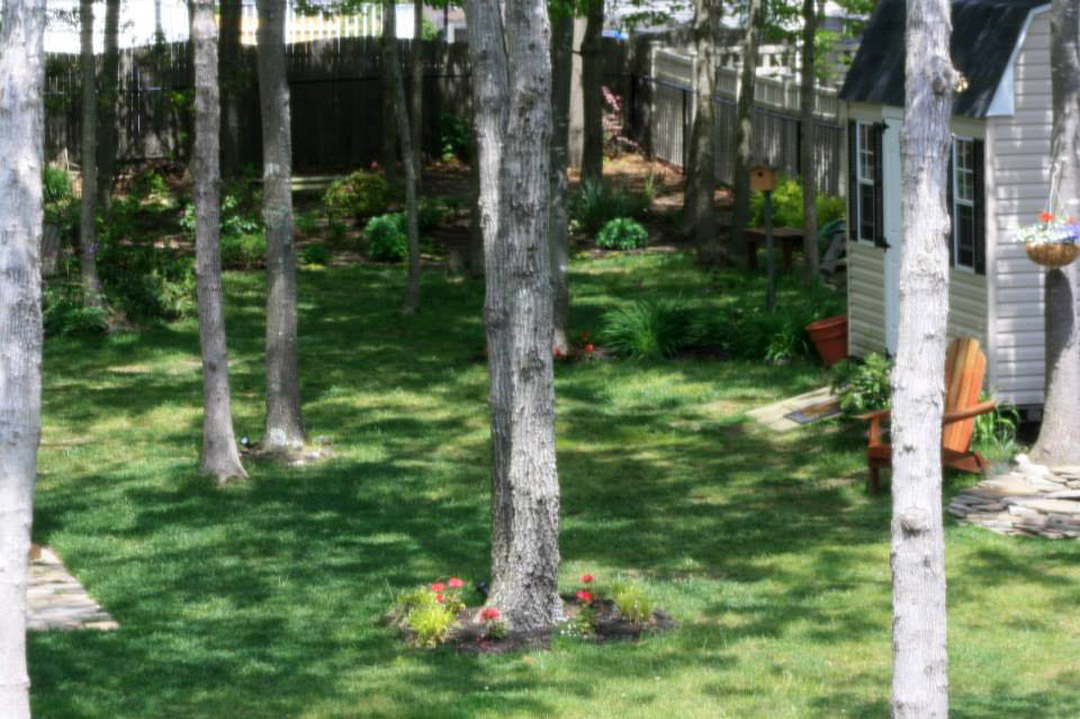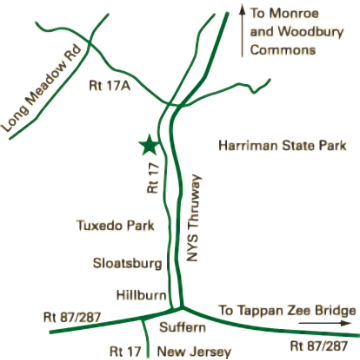
In recent years my Mother moved from Bergen County to Ocean County and is now facing the predicament of landscaping in a thin, sandy soil as opposed to a rich fertile top soil or clay; which is the norm in the North Jersey and Hudson Valley regions. Maintaining a lush green yard filled with flowers and greenery in a sandy soil based environment is an endeavor completely new and foreign to her. Transitioning from one location to another or buying a vacation home can introduce the confusion of not knowing what types of lawns, flowers, shrubs, and trees will thrive in your yard.
Being comfortable with planting in new territory compounded with the need to landscape on a newly built development has posed a bit of a dilemma. When the home was originally built contractors put down about a foot of top soil and laid sod that has since worn away with natural erosion, foot traffic, and the onslaught of 2 puppies. Creating a lawn space in the coarse, loamy sand becomes almost impossible; the soil drains moisture far too quickly and is only moderately fertile. The decision now becomes do we go with shipping in top soil and reseeding the lawn, putting down gravel, choosing Foreverlawn, or allowing the natural landscape of coastal sand to take over.
There are drawbacks and rewards to each decision. The first step, though, in the lawn decision may be to minimize the size of the lawn to reduce cost and extra care. Delivering top soil can become quite costly, especially with the need for reapplication each year or every couple years as well as reseeding. But the plus side would be the green lawn we are so familiar with and love. Gravel is a nice option as well but, with puppies it may hurt their paws, may become too hot in the Summer months, and the cost and application would be equivalent to applying top soil, but possibly with a bit less reapplication needed.
Perhaps one of the most effective and lasting options would be to choose Foreverlawn, which is a quality and realistic synthetic grass. It requires no watering and little maintenance to keep it looking fresh and green, with the promise of the grass lasting 12 to 15 years. In my mother’s case, since she has the 2 puppies her best option may be K9Grass. With the original grass disappearing because of erosion and lack of nutrients the dogs have been tracking mud in and out of the house, K9Grass ensures the threat of muddy paws in the home becomes obsolete. The K9Grass offers a flow through backing and antimicrobial protection making it a cleaner, safer, and better smelling environment for pets.
After deciding the best option for the lawn, the next obstacle to face is what should I be planting in my garden. One may think to introduce the plants familiar to their previous growing region but soon learn it is more cost-effective and less strain to select plants adapted to the conditions of the environment. Rather than being upset that you can’t grow or duplicate the familiar, take advantage of what the sandy soil has to offer, which is loose texture and good drainage. Choose to discover the species that thrive in sandy soils and drought-prone locations and have some fun with something new. Here are just a few options to choose from:
- Hydrangeas (a familiar favorite) — benefit from milder winter temperatures and moist ocean air.
- Root Crops — carrots, beets, radishes
- Herbs — need good drainage, Rosemary, Oregano
- Annuals — Cleome, Cosmos, California Poppies
- Perennials — Yarrow, Rugosa Rose, Lavender, Artemesia, Thyme, Sedums, Russian Sage, Grasses, Sedges
- Shrubs — Smoke Trees, Privets, flowering Quince, Mountain Laurel, Butterfly Bush
- Trees — Crape Myrtle, White Pines, Red Cedars, Oaks
If you choose, there are solutions if you are set on less well suited plants, that you just can’t live without. But first it’s important to know that it will take a dedicated gardener, that overtime can improve the soil with organic amendments. The organic material will help to combat the lack of fertility and moisture retention. (But with the hungry sand, regular application will be a must). Adding compost such as decomposed leaves, humus, peat, manure, and microbial mulches will improve the soil and add good fungus and bacteria. Good garden compost is loaded with diverse populations of active and dormant bacteria and beneficial fungi, that will add fertility and help with soaking up water and holding moisture.
Whatever it is that you choose for your garden, do not become disheartened and learn to have fun with the new and exciting. Make sure to do your research and visit your local nurseries for advice and guidance in your steps to creating your ideal yard.







